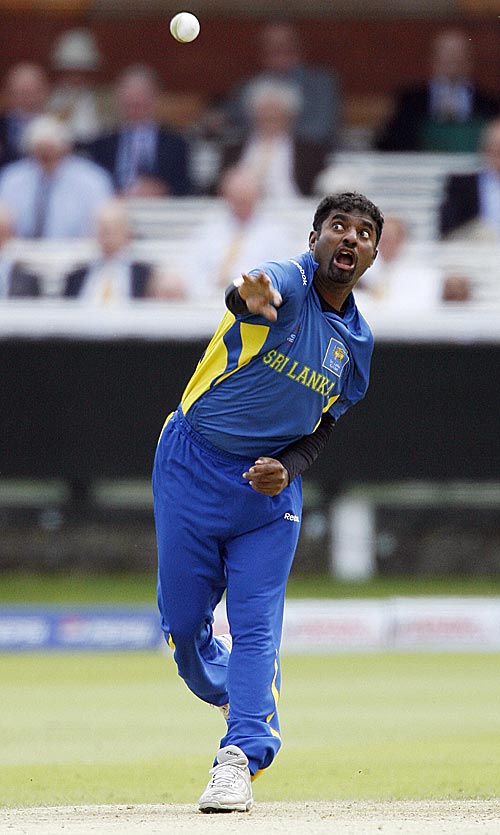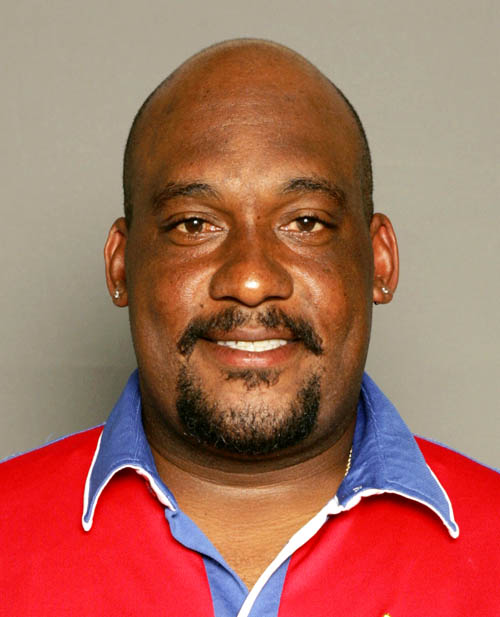With England up 1-0 after 2 Tests, can Australia fight back? Or is the momentum now against them? They fought back from 1-0 down in 1997 in England, but that was a vastly different team. Have a vote in our poll - we'll shut it down just before the 3rd Test to capture what people are thinking at this stage of the series.
Wednesday, 22 July 2009
Who will win the Ashes from here?
Sunday, 19 July 2009
Test Retirement
 There was a time when players used to retire from cricket at the end of their career. However a new concept has begun to raise it’s ugly head; “Test retirement”. The second announcement in a week of a prominent cricketer came today when Chaminda Vaas announced that he was retiring from test cricket to focus on Twenty20 and Limited Overs cricket. This coming of course, off the back of the much publicised announcement from Andrew Flintoff of exactly the same thing.
There was a time when players used to retire from cricket at the end of their career. However a new concept has begun to raise it’s ugly head; “Test retirement”. The second announcement in a week of a prominent cricketer came today when Chaminda Vaas announced that he was retiring from test cricket to focus on Twenty20 and Limited Overs cricket. This coming of course, off the back of the much publicised announcement from Andrew Flintoff of exactly the same thing.
It comes as little surprise for this generation of players. Test cricket is a long cruelling game of stamina and can quite easily take it’s toll on the body, so it’s natural to understand why players like Flintoff who has struggled with injuries throughout his career would clearly look to find a way of extending it. Having a long career in cricket can be very lucrative these days, with all the money from the IPL it has never been a better time to play cricket.
In fact, the pay difference between playing test cricket and Twenty20 cricket is so great, that it’s getting to a point where Test cricket is actually becoming a bit of liability.
Look at the recent turmoil currently taking place with West Indian cricket. Pay is the central problem at the moment in the dispute – one can easily speculate the catalyst for this dispute, or at the very least one of the major pain points for some of the high profile players. The Test series between England and the West Indies. It was not part of the Future Tours Program, and the Windies had just recently defeated the English on home soil in a war of attrition 1-0 series. With Sri Lanka pulling out because of their players commitments to the IPL, the Windies were a last minute replacement, and the impact of this meant that star players like Chris Gayle were suddenly out of pocket, significantly.
The reality of the situation is that, unless you’re Australian, playing Test cricket can actually cost you money. Only Australian’s have voluntarily omitted themselves from playing in the IPL, this year Ricky Ponting, Michael Hussey, Michael Clarke and Mitchell Johnson were all high profile players that chose to make themselves unavailable for this competition – in fact Clarke and Johnson have steadfastly avoided even being a part of the draft process entirely. Is it really just a coincidence that these players are actually the top 4 money earners under lucrative Cricket Australia contracts?
It’s because they’re just about the only players who can afford it.
Thursday, 16 July 2009
Ashes survival guide (if you're into science...)

Ashes backyard cricket
Originally uploaded by westius.
Here is our science survival guide to the Ashes:
- Ashes success and El Nino
- How to rank cricketers
- Science, Psychology and Cricket
- The curse of the duck
- Science, Cricket, Fitness and Psychology
- Sex before Sport?
- Economists, oil, cricket and correlation
Is the winner of The Ashes already pre-determined? Manoj Joshi has shown that the El Nino Southern Oscillation (ENSO) phenomenon has a significant effect on the results of The Ashes cricket series when the series is held in Australia. The Australian Cricket team is more likely to succeed after El Nino years, while the English cricket team does better following La Nina years (the opposite phase). Their study, Could El Niño Southern Oscillation affect the results of the Ashes series in Australia? was published in the journal Weather.
Cricket is one of the world's most statistical sports, and mathematicians in cricket-loving nations love nothing more than delving into the minutiae of the numbers and diving into averages, strike-rates and custom-made measures of batting and bowling effectiveness.
For many people, including me, cricket isn't just a sport, it is a way of life.
These words could easily have come from me, but are actually the words of Rob Eastaway, a cricket-loving mathematician from the UK, and originator of the official International Cricket Council cricket-ratings which rank not only teams, but players within each team. In this podcast, I chat to Rob about how you mathematically rank cricketers.
Every cricket season, the TV coverage of cricket becomes more spectacular and technological, with the introduction of microphones to detect the finest of edges through to the keeper, improved abilities to determine the trajectory of a ball once it has left the bowler’s hand, and now even heat sensors to see how the batsman sweats.
But the scientific aspects of cricket are not limited to TV companies, with science playing an increasing role in shaping the performance of players, from their general fitness to specific training techniques for both their physical, and possibly more importantly mental, well-being. It is with science that countries are aiming to find the competitive edge.
The recent news of the great Indian batsman Sachin Tendulkar surpassing West Indian Brian Lara's record number of test runs has given maths-loving cricket geeks another opportunity to pull out their calculators and Excel spreadsheets. At the time of writing, Tendulkar had scored 12,027 runs across 247 innings, to overtake Lara's 11,953 from 232 innings. After a little investigation, I found that despite his outstanding average of over 54 runs per innings, Tendulkar's most common score in test cricket is ... zero! Even the great Don Bradman scored a duck more times than any other score. And their next most common? One! We look at how are cricket scores are distributed.
Do you need to be fit to play cricket? Do the best batsmen in the world really have the ability to predict the type of ball they will receive before it even arrives? And is cricket really more of a mental game than a physical one?
In this podcast episode, we talk to Dr Rob Duffield from the School of Human Movement at Charles Sturt University who has found that indeed you really do not need to be as physically fit to play cricket as you do other sports such as football. We also chat to Dr Allistair McRobert from Liverpool John Moores University whose work has shown that the best batsmen can predict to some extent where a bowler will bowl. This work encompasses a look into the subconscious mental game of cricket and how the most successful players are more mentally prepared for the top level than lesser players. More on this topic can also be found in our article The Science of Cricket.
It is the virile sports-person's eternal question - should one abstain from a little bit of nookie before a big sporting event? If I was Michael Clarke and engaged to Lara Bingle, I wouldn't be...
Can we predict cricket results using the price of oil? Or is this just bad stats. Also see our article Poor correlations, or why it's not the fault of Aussie cricketers.
Good luck to all and come on you Aussies!
Tuesday, 14 July 2009
Choosing the right sub-atomic particle analysis facility is a little bit like medium pace bowling
I love this clip of former Australian cricket Damien Fleming on the comedy show Thank God You're Here, the Australian theatre-sports style show which essentially aims to embarrass celebrities. In this challenge, as Australian sportsmen tend to talk a lot about things they don't know, Fleming was set the challenge of marketing the Australian Synchrotron. His opening line, "choosing the right sub-atomic particle analysis facility is a little bit like medium pace bowling" is brilliant. Check it out below or on the youtube video:
Saturday, 11 July 2009
The Sri Lankan Big Bash
 With the seeming failure of the Southern Premier League getting off the ground, Australia's Big Bash Twenty20 tournament is taking matters into their own hands with Cricket Australia allowing each state to recruit up to two international players to their teams. This is a great idea as the appeal of the Indian Premier League has shown that the lure of international stars is big business. Of course while the Australia competition can't compete in money terms with the IPL the timing of the tournament means that it's a good additional option for international players as it will never clash with the cashed up Indian tournament.
With the seeming failure of the Southern Premier League getting off the ground, Australia's Big Bash Twenty20 tournament is taking matters into their own hands with Cricket Australia allowing each state to recruit up to two international players to their teams. This is a great idea as the appeal of the Indian Premier League has shown that the lure of international stars is big business. Of course while the Australia competition can't compete in money terms with the IPL the timing of the tournament means that it's a good additional option for international players as it will never clash with the cashed up Indian tournament.
Without having a clear understanding of the touring schedules of the different nations it's interesting to see that just about every state has gone for Sri Lankan players. Ajantha Mendis for South Australia, Lasith Malinga for Tasmania and there's talk of Kumar Sangakkara playing for New South Wales and most exciting is the possiblity of Muttiah Muralithuran playing for Victoria. In fact, the only other international stars announced so far appear to be West Indian, with Chris Gayle for Western Australia and Dwayne Bravo for Victoria. Chances are they are the only nations who don't have conflicting tours during the time of the competition mind you there's also word that former Queenslander Brendon Nash is on a bit of recruiting drive for his former state in attempts to lure some of his West Indian tour mates to play for the Bulls, but it will be interesting to see what other players are announced in the coming weeks. A question I have, does Queensland want Brendon Nash? And if they do, does he count as an international player these days? And if they don't want him - isn't that a bit of an awkward situation?
I can just imagine the conversation between the Queensland Bulls rep and Brendon Nash:
BULLS: Hi Brendon, we're looking to recruit some players for the Big Bash tournament this summer.
NASH: Oh sure, I'd be happy to come back and play for you guys!
BULLS: Uh, yeah, um, that's great that you're keen, but, uh, we were kind of wondering if you could have a chat with some of your team mates.
NASH: Oh. Okay then.
Burn.


